The Road Ahead
In the late 70s, Dutch traffic planner Hans Monderman experienced the kind of insight that gets people sent to an asylum. ”Let’s eliminate all traffic signals and signs and remove the divisions between the road and sidewalk where cars and people interact. There will be fewer accidents and traffic flow will improve.” Monderman’s approach seemed completely radical: roads that seem dangerous are safer than roads that seem safe. The concept was a smack in the face of convention.
Accepted traffic planning methods date back to 1929, to Radburn, New Jersey. The residential area was launched as ”The Motor Town of the Future.” It was, in effect, a study in near total human/traffic non-interaction. The reasoning was obvious: cars are big, fast and hard; people are slow, soft and fragile. Segregate the two and people can walk safely and cars can move quickly from A to B. The result became a model for road planners in all developed nations and a blueprint for the world.
The system had an unintended consequence: endless stop-and-go. Where drivers and pedestrians [eventually and inevitably] interact, they both face countless interruptions to their natural flow. They have to stop. Monderman’s counter theory: go slower to move faster. To help road users go with the flow, Monderman recommended bringing cars and people into greater proximity– without signs or signals. Monderman argued that human contact through the windshield creates a self-regulating and efficient traffic flow, as users negotiate with one another for right of way.
Monderman’s ideas were met with near biblical outrage. The Dutchman persisted, until the Netherlands gave him permission to test his theories. In several Dutch towns, engineers ripped out signs and signals, flattened sidewalks and created radical new road-flow patterns. The result: a statistically verified reduction in accidents and fatalities. Monderman’s success with ”human contact flow” has lead to changes in roadways throughout the European Union and the U.S.
An American named Walter Kulash added to the growing ”liveable traffic” (r)evolution. The Senior Traffic Engineer at the Orlando community-planning firm of Glatting Jackson Kercher Anglin Lopez Rinehart Inc. saw that outdated planning had created islands of inactivity in both suburbia and urbia. At night, downtown areas are abandoned. During the day, outlying residential districts are desolate. People spend a lot of time driving from one to the other, usually negotiating traffic snarls.
Kulash believes in creating more efficient habitats, by manipulating street geometry and introducing mixed use of space. Working with planners intent on transforming West Palm Beach from a dead end darkworld to a 24-hour address, Kulash helped create a liveable town out of what used to be shops and parking spaces. Developers have seen property values increase three and four-fold after Kulash’ interventions. His traffic-calming and urban design methods are helping create numerous ”liveable traffic spaces” across North America, where people work, live, shop, play AND drive.
Monderman’s flow generation and Kulash’ traffic calming principles could trigger a shift in automotive tastes. Transportation analysts estimate that the average U.S. vehicle travels roughly 30 miles a day. Encouraged by the ”New Urbanism” planning scene, drivers may finally abandon the idea that their cars must be capable of transcontinental transportation, and shift to lower speed plug-in hybrids and electric vehicles. Rising gas prices and increasing environmental/political consciousness will only accelerate the transition.
A year ago, I asked Walter Kulash’s opinion about a car platform bound for the U.S. Kulash said that the new car fit within his critical ”effective turn-radii” requirement; it would be able to get around the new townscape with ease. In other words, Kulash is creating roads where big cars are as out of place as a sumo wrestler in a ballet troupe.
To conform to American tastes, these vehicles would have to be small on the outside, yet feel big on the inside. The Nissan Versa understands the equation. But the genre needs a premium player to overcome the stigma of ”small = cheap.” In that regard, the long-delayed SMART car is the one to watch. Originally planned as an EV city runner, the Smart cars now sip gasoline. Don’t be surprised to see the platform get new drivetrains as DCX reaches for profit opportunity.
The rise of car sharing companies like Flexcar and Zipcar also show that a growing percentage of drivers are willing to abandon the gratification of ownership for the ease and economy of more practical personal transportation. Where these companies are going, the majors should follow. American carmakers would be wise to adjust their future products to match this merging of urban and suburban environments.
The Big Two Point Five should build products that exploit the new, more people-friendly asphalt paths through our streetscapes. By catering to the switch from gas-guzzling land yachts to economical, environmentally-friendly runabouts, Detroit may discover the economic reinvention it so dearly needs.
Brand strategist and conceptualizer. Working with communicating premium brands for manufacturers around the world.
More by Stein X Leikanger
Latest Car Reviews
Read moreLatest Product Reviews
Read moreRecent Comments
- Bkojote Allright, actual person who knows trucks here, the article gets it a bit wrong.First off, the Maverick is not at all comparable to a Tacoma just because they're both Hybrids. Or lemme be blunt, the butch-est non-hybrid Maverick Tremor is suitable for 2/10 difficulty trails, a Trailhunter is for about 5/10 or maybe 6/10, just about the upper end of any stock vehicle you're buying from the factory. Aside from a Sasquatch Bronco or Rubicon Jeep Wrangler you're looking at something you're towing back if you want more capability (or perhaps something you /wish/ you were towing back.)Now, where the real world difference should play out is on the trail, where a lot of low speed crawling usually saps efficiency, especially when loaded to the gills. Real world MPG from a 4Runner is about 12-13mpg, So if this loaded-with-overlander-catalog Trailhunter is still pulling in the 20's - or even 18-19, that's a massive improvement.
- Lou_BC "That’s expensive for a midsize pickup" All of the "offroad" midsize trucks fall in that 65k USD range. The ZR2 is probably the cheapest ( without Bison option).
- Lou_BC There are a few in my town. They come out on sunny days. I'd rather spend $29k on a square body Chevy
- Lou_BC I had a 2010 Ford F150 and 2010 Toyota Sienna. The F150 went through 3 sets of brakes and Sienna 2 sets. Similar mileage and 10 year span.4 sets tires on F150. Truck needed a set of rear shocks and front axle seals. The solenoid in the T-case was replaced under warranty. I replaced a "blend door motor" on heater. Sienna needed a water pump and heater blower both on warranty. One TSB then recall on spare tire cable. Has a limp mode due to an engine sensor failure. At 11 years old I had to replace clutch pack in rear diff F150. My ZR2 diesel at 55,000 km. Needs new tires. Duratrac's worn and chewed up. Needed front end alignment (1st time ever on any truck I've owned).Rear brakes worn out. Left pads were to metal. Chevy rear brakes don't like offroad. Weird "inside out" dents in a few spots rear fenders. Typically GM can't really build an offroad truck issue. They won't warranty. Has fender-well liners. Tore off one rear shock protector. Was cheaper to order from GM warehouse through parts supplier than through Chevy dealer. Lots of squeaks and rattles. Infotainment has crashed a few times. Seat heater modual was on recall. One of those post sale retrofit.Local dealer is horrific. If my son can't service or repair it, I'll drive 120 km to the next town. 1st and last Chevy. Love the drivetrain and suspension. Fit and finish mediocre. Dealer sucks.
- MaintenanceCosts You expect everything on Amazon and eBay to be fake, but it's a shame to see fake stuff on Summit Racing. Glad they pulled it.



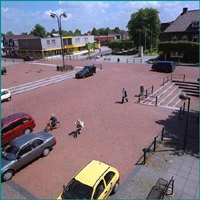


















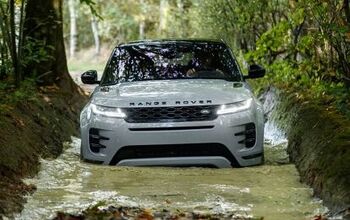
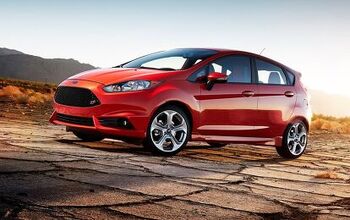
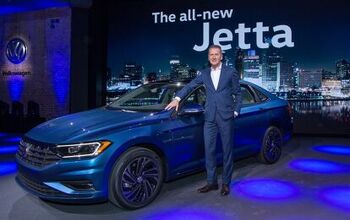
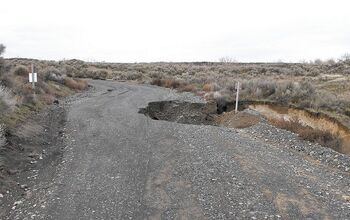











Comments
Join the conversation
@MW Many Americans simply cannot be trusted to handle a deadly weapon (i.e. a car) around others. That may be lamentable, but asking people to put their lives at risk simply isn’t reasonable. But people do handle cars around others, all the time. The safety you feel when passing a meeting car is an illusion - as is the sense of being protected just because you're up on a sidewalk, right next to traffic zipping past at 40-50 miles an hour. Remember sitting at a sidewalk cafe in LA, and one of us lit up a cigarette. A woman at the table next to us shouted out that we had to extinguish the cigarette. She was quite livid - "Are you trying to kill me?" Right next to us cars were zipping past, close to where we were sitting. Exhaust fumes being one thing, one of them could have jumped the curb. As you can understand, I do not accept your argument - and as I have observed Monderman's solutions for real, I see that they are indeed safer, and more navigable, than the conventional "pretense" safety created by signs and signals and barriers that are no such thing, once an accident does happen ... Of course, you'll have to drive slower.
It would have to be a gated community: access for Hummers and Suburbans not allowed, it says at the entrance.